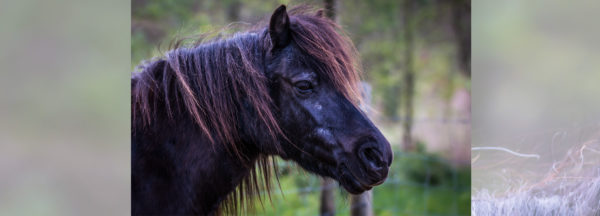How Can I Get My Stubborn Cushing’s Horse to Take Medication?

By Dr. Tania Cubitt & Dr. Stephen Duren, Performance Horse Nutrition
Cushing’s disease tends to occur in middle-aged and older horses, around age 20. Without treatment, symptoms tend to worsen over time and can be fatal. Symptoms are easily observed in advanced cases.
Diagnosis:
Diagnosis of early cases or those characterized by few obvious clinical signs can be more difficult. There are two clinical tests available, a dexamethasone suppression test and a plasma ACTH measurement test. Consult your veterinarian for the appropriate tests if you suspect your horse has Cushing’s disease.
Feeding & Management:
These horses are often insulin-resistant and have high blood sugar levels, so non-structural carbohydrates (NSC, sugar and starch) need to be minimized. For most horses with Cushing’s disease, feeding recommendations are to provide a total diet with less than 15% sugar and starch. Pasture grasses can have high sugar content, especially during the spring and fall seasons. Since laminitis and founder are more common in horses with Cushing’s disease, pasture grazing should be severely limited or totally avoided. Regular exercise reduces blood glucose levels, so it will help horses with Cushing’s disease.
In addition to the number of Standlee Alfalfa products available that are beneficial in the feeding program of horses with Cushing’s disease, a new unique product to Standlee Premium Western Forage® is the Horse Pill Carriers®. These offer a convenient way to disguise common prescription medications that are given to horses with Cushing’s disease, such as Prascend®.
Learn more at standleeforage.com.
